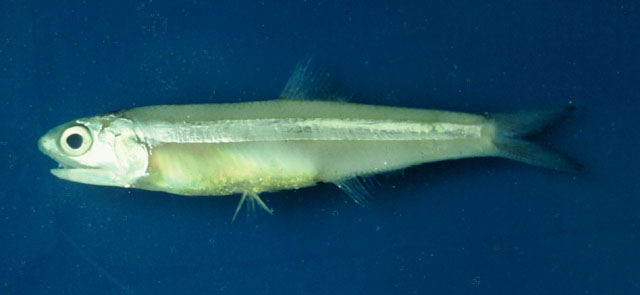| Engraulidae (Anchovies), subfamily: Engraulinae |
| 14.9 cm TL (male/unsexed); max.weight: 24.1 g |
|
pelagic-neritic; brackish; marine; depth range 0 - 50 m |
| Southwest Atlantic: Ceará, Brazil southward to Mar de la Plata, Argentina. |
|
Dorsal spines (total): 0-0; Anal spines: 0-0; Anal soft rays: 16-19. Snout long, pointed, about 3/4 eye diameter; maxilla moderate, tip not sharply pointed, not or only just reaching to hind border of pre-operculum; gill cover canals of panamensis-type. Anal fin short, its origin below or behind midpoint of dorsal fin base. A broad silver stripe along flank, about 3/4 eye diameter. |
| A schooling species found in coastal waters, but also entering brackish water. More data needed (Ref. 189). Found in markets (Ref. 37032). Largely utilized as bait for commercial fishery, oil, flour, and also canned fish (Ref. 103984). |
|
Least Concern (LC); Date assessed: 06 March 2017 Ref. (130435)
|
| harmless |
Source and more info: www.fishbase.org. For personal, classroom, and other internal use only. Not for publication.

